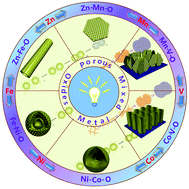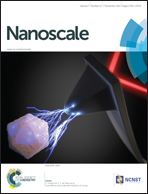Porous mixed metal oxides: design, formation mechanism, and application in lithium-ion batteries
Abstract
The relentless pursuit of new electrode materials for lithium ion batteries (LIBs) has been conducted for decades. Structures with either porous or nanostructure configurations have been confirmed as advantageous candidates for energy storage/conversion applications. The integration of the two features into one structure can provide another chance to improve the electroactivities. Recently, single-phased mixed metal oxides (MMOs) containing different metal cations, in particular, have confirmed high electrochemical activities because of their complex chemical composition, interfacial effects, and the synergic effects of the multiple metal species. In this review, we will focus on recent research advances of MMOs with porous architectures as anode materials in the matter of structural arrangement and compositional manipulation. Moreover, the application of self-supported MMO-based porous structures as LIB anodes is also explained herein. More importantly, investigations on the synthetic system and formation mechanism of porous MMOs will be highlighted. Some future trends for the innovative design of new electrode materials are also discussed in this review. The challenges and prospects will draw many researchers' attention.


 Please wait while we load your content...
Please wait while we load your content...